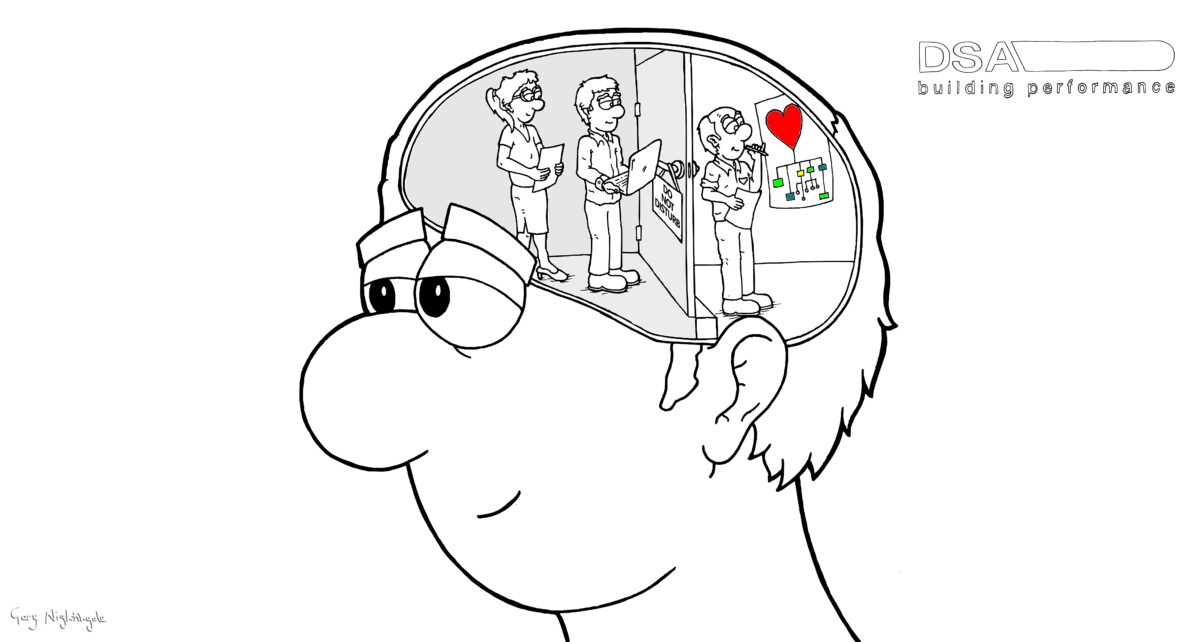Headspace: how to get it, how to use it, and something much deeper

It’s 08:30. I’ve got three hours before my first Zoom. Three hours of headspace to think about headspace, how to get it and how to use it, which is the theme of the Team Focus Zoom I am running with a leadership team tomorrow.
Three hours of uninterrupted time to think. I won’t get any calls, emails and social media notices because all devices are set to flight mode.
Is that too long or too short? Can I concentrate for that length of time? Will I get to the end and need more?
The space, my office, is quiet, clean and uncluttered.
I’ve got thinking tools: white boards, IPad, Apple Pencil, plain paper, coloured pens, Post-it notes.
I’ve got a bottle of water and a mug of good tea.
I’ve had a good night’s sleep. I’m fit and healthy and not particularly worried about anything.
I’m motivated to do a good job of my thinking. I care, and have a feel for it.
I know what I need to think about. I’m doing it right now: thinking about headspace, with heart.
I am set up for headspace or at least in the context of what I think my customers are referring to when they say they need headspace. I think they are talking about uninterrupted, dedicated time to think clearly.
So that’s my working definition of headspace: uninterrupted and dedicated time to think clearly.
But there is more to it than that.
The constant theme running through my feedback
My customers value the headspace they get in the work I do with them. It’s a constant theme running through 20 years of feedback from the many hundreds of Team Focus Days, now Team Focus Zooms, done with leadership teams in the UK construction industry.
They value it because they don’t get it elsewhere; particularly collective or team headspace.
The constant hurly burly of business doesn’t allow it. It’s full-on, all day, one Zoom after another, and then responding to hundreds of emails well into the night. Rinse and repeat. Day after day.
Some teams, like the one I worked with last week, actually want ‘headspace’ to be the focus of our work for the day. How can we get more headspace, they ask?
And I challenge: “What are you going to do with it when you get it, what are you going to think about? And how do you feel?”
In the session last week, Mark said he was now getting one hour of headspace a day which, he said, he had freed up by delegating outcomes.
“I’m no longer jumping in, telling them how to do it,” he said.
“I explain the outcome needed and then let them get on with it their way. It was really hard initially, then one day it clicks and then its easy.”
Five hours a week is good progress and, as an external coach, I see the difference in Mark.
They value the headspace though I know something bigger is happening.
So, the leaders I work with value headspace.
However, from years of experience, I know there is something much bigger going on.
When leaders think together, work through issues together, strategise together, they come out joined up, aligned and heading in the same direction.
When joined up leadership happens, so do remarkable business results, usually a year or so down the line.
I call such instances ‘happy coincidences’.
I will work with a leadership team for a year or so and then they have their best year ever!
It’s their work and their joined-up leadership that does it, not mine.
I create the space for them to join up and deliver. And it’s not just the headspace; there’s something else, something deeper. It’s heartspace.
Heartspace – can you feel your heartbeat without touching your body, a new leadership challenge?
You see, leadership is about creating the environment for success; the environment where people can do their best work. When that happens, the organisation takes off.
Creating the environment is about having a feel for the work of leadership.
It’s not about engineering or architecture or management, it’s about being a human being and engaging heart: your heart, the hearts of your people, the heart of the organisation and the heart of the customer.
That’s the added ingredient my customers get in the work we do together; along with the headspace, they notice and appreciate.
So how do you engage your heart?
Well here’s a starter for ten: see if you can feel your heartbeat without touching your body.

